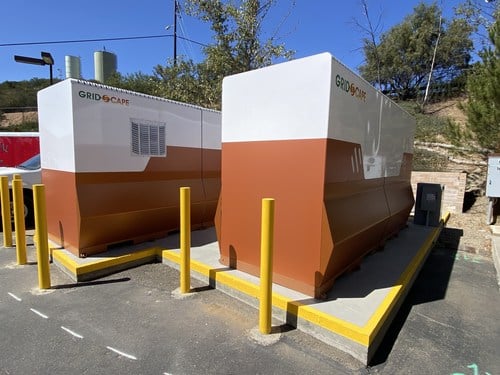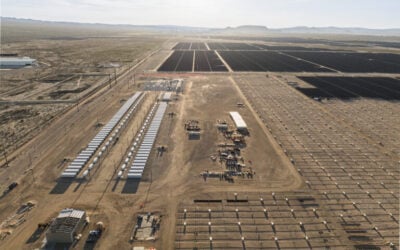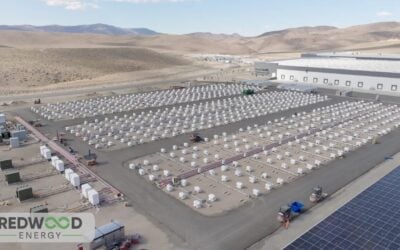
The California Public Utilities Commission (CPUC) has approved the rules of its programme to offer US$200 million funding for microgrid projects in the service areas of the state’s investor-owned utilities (IOUs).
The Microgrid Incentive Programe (MIP) aims to accelerate the commercialisation of clean energy microgrids that can support disadvantaged vulnerable communities (DVC) impacted by grid outages, giving them a reliable supply of low carbon energy during wildfire seasons and other causes of disruptions.
Enjoy 12 months of exclusive analysis
- Regular insight and analysis of the industry’s biggest developments
- In-depth interviews with the industry’s leading figures
- Annual digital subscription to the PV Tech Power journal
- Discounts on Solar Media’s portfolio of events, in-person and virtual
In a decision made earlier this month (6 April), the regulatory body created the MIP’s rules while also directing the three IOUs, Pacific Gas & Electric (PG&E), Southern California Edison (SCE) and San Diego Gas & Electric (SDG&E) to conduct outreach and consultation activities with communities that bid for a pot of funding.
An individual project can get up to US$15 million, with the utilities sharing the pot based on their relative size and needs: SCE gets the biggest share, at US$83.3 million, PG&E US$79.2 million and SDG&E’s share is US$17.5 million.
Rules voted on and approved by the CPUC govern the operation and market participation of the self-contained microgrids, which based on other recent microgrid projects in California are likely to include solar PV and battery energy storage system (BESS) technology, although many microgrids also feature some form of thermal generation as backup.
However, that backup or standby generation portion of the microgrids will not count as project resources under the MIP, while project resources that do count will be required to serve at least 24 hours of load to the defined microgrid boundary area when in Island Mode i.e., disconnected and operating independently of the utility grid.
Projects must be community microgrids for eligible DVCs, and be a critical facility, such as a hospital, or provide important community resilience services, such as an emergency shelter.
Risks they face could include being in High Fire Threat districts, or areas that experience public safety power shutoffs (PSPS), where utilities disconnect distribution feeders to reduce fire risk and often leave homes or whole communities without power for days, earthquake-prone areas, and areas with historically poor records of maintaining reliable electricity supply.
“The Microgrid Incentive Program will provide valuable support to disadvantaged and vulnerable communities towards ensuring they are not left behind in the broader statewide resiliency effort. These communities tend to be located in more electrically isolated areas with greater distances to essential services, experience more outages, and have less accessibility to entities with backup power,” CPUC commissioner Genevieve Shiroma said.
Commissioner Shiroma added that education and outreach to ensure DVCs are able to “meaningfully participate” are also important components of the programme.
SDG&E moves to harden grid against wildfires for tribal areas
In related news, IOU San Diego Gas & Electric last week said it had applied to the US Department of Energy (DOE) for up to US$100 million in federal funds to support its efforts to mitigate wildfire impacts.
SDG&E applied to the DOE’s Grid Resilience and Innovation Partnerships Grant scheme, which was created by the Infrastructure Investment and Jobs Act a.k.a., the Bipartisan Infrastructure Law, the 2021 predecessor to the Inflation Reduction Act (IRA).
If approved, SDG&E would match the DOE’s funding, which it said would be used for wildfire hardening efforts on and around tribal areas in the utility’s service territory.
The money would be spent on upgrading about 70 miles of power lines that serve 10 tribal areas, including putting a large portion underground.
In addition to seeking federal and state funds for specific climate adaptation measures, SDG&E’s strategy to lower costs for its customers includes maximising the available federal tax credits unlocked by the IRA for battery storage and microgrid projects, which it will refund to its customers, the utility said.
A few weeks ago, a solar-plus-storage microgrid with 6MWh of BESS was announced for the Soboba Band of Luiseño Indians in California’s Riverside County, by Scale Microgrids. The Native American tribe, as a non-tax paying entity, along with rural electric cooperatives, states and tax-exempt organisations, can avail of the Inflation Reduction Act’s investment tax credits (ITC) scheme through a Direct Pay option, sidestepping the complex and expensive tax equity financing structures and transactions that other projects require to get the ITC.
That was one of a number of tribal microgrids in the state Energy-Storage.news has reported on, with others including a 60MWh project featuring long-duration energy storage (LDES) battery technologies from flow battery provider Invinity and zinc-air battery company Eos.






